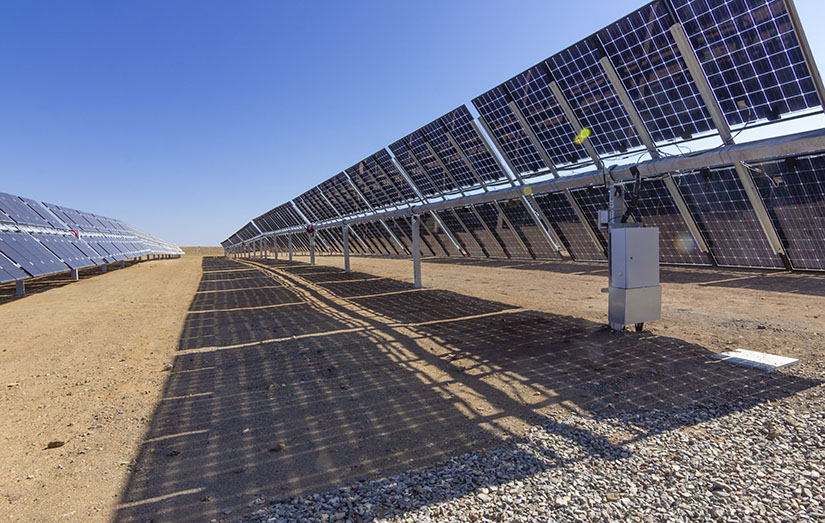Informing Energy Transitions: The 2023 Electricity Annual Technology Baseline
ATB Day Is Here, Featuring Changes for Solar, Wind, Geothermal, Carbon Capture, and Financing

Informing energy transitions in the United States, the National Renewable Energy Laboratory (NREL) has released the 2023 Electricity Annual Technology Baseline (ATB), a realistic and timely set of technology cost and performance data (current and projected) for the electric sector. Expressed in various formats including interactive charts, the data enable analysis of renewable and conventional energy resources, including wind, solar, geothermal, hydropower, biopower, coal, natural gas, nuclear, and battery storage.
2023 Electricity ATB Updates
Electricity ATB users can register now to learn about the 2023 Electricity ATB, which accounts for economic shifts and technological advancements in the past year. The updates will be shared during the annual ATB webinar at 9 a.m. MT on July 24, 2023. Following the overview of the 2023 updates, the webinar will feature technology-specific breakout rooms to provide more detailed information to ATB users.
“Many technologies saw significant changes between the 2022 and 2023 ATBs due to higher interest rates and supply chain constraints,” said NREL’s Brian Mirletz, technical lead of the Electricity ATB. “Where possible, we gathered data about recent changes, even after the 2021 base year. For example, the geothermal technology analysts were able to incorporate cost and performance data about geothermal startups from some of the latest conference proceedings. In addition, the tax credit landscape changed dramatically with the passage of the Inflation Reduction Act.”
Significant changes in this year’s Electricity ATB include:
- The addition of retrofit technologies for carbon capture and storage for coal and natural gas plants
- Introduction of four representative wind turbine technologies to show variation in design by wind class
- New learning curves for enhanced geothermal systems
- Photovoltaic capacity factors that consider bifaciality
- New financial assumptions that include a simplified representation of the IRA tax credits.
“In this year’s release, the Electricity ATB team tackled challenging and important data questions that are critical to keep analysis up to date,” said Laura Vimmerstedt, who leads both Electricity and Transportation ATB, which provides detailed cost and performance data, estimates, and assumptions for vehicle and fuel technologies in the United States.
The Go-To Source for Electricity Sector Data
Analysts from NREL, Oak Ridge National Laboratory, and the U.S. Department of Energy’s Office of Energy Efficiency and Renewable Energy and Office of Fossil Energy and Carbon Management closely follow electricity generation and storage technologies included in the 2023 Electricity ATB: land-based wind, offshore wind, distributed wind, utility-scale solar photovoltaics (PV), commercial-scale solar PV, residential-scale solar PV, concentrating solar power, geothermal power, hydropower, utility-scale battery storage, commercial battery storage, residential battery storage, utility-scale PV-plus-battery hybrids, pumped storage hydropower, coal, and natural gas.
Based on this expertise, the ATB team develops cost and performance projections that characterize each technology. These projections start from base year estimates of current technical performance data and market intelligence on pricing. The 2023 Electricity ATB website provides in-depth documentation of its key products, including:
- Details on historical trends, current estimates, and future projections of three primary cost and performance factors: capital expenditures, capacity factor, and operations and maintenance cost
- Documentation of the methodology and assumptions used to develop the projections of future cost and performance under conservative, moderate, and advanced technology innovation scenarios
- Discussion of the calculation of levelized cost of energy to illustrate the approximate combined effects of the primary cost and performance factors, using two different sets of financing assumptions.
Prior releases of the Electricity ATB have had over 100,000 users in the past five years, including federal agencies, state energy offices, consultants, utilities, grid operators, nonprofits, academia, and international institutes. With such a broad audience, the ATB is designed to be accessible in a variety of formats including Excel, Tableau, an application programming interface (API), and a website.
“Having a suite of products increases ease of access and broadens the audience,” Mirletz said. “For example, an analyst who is more comfortable with Excel analysis will use that product, while someone doing analysis with Python will use the API in order to have more structured data. Tableau charts embedded in the website allow users to dynamically interact with the data while reading the documentation, making it easier to find answers in one place.”
The Electricity ATB has informed analytical reports with national impact including the NREL, U.S. Department of Energy, and Lawrence Berkeley National Laboratory publication Evaluating Impacts of the Inflation Reduction Act and Bipartisan Infrastructure Law on the U.S. Power System. ATB data has also informed community and regional analysis.
Learn more about key findings by registering for the 2023 Electricity ATB Launch Webinar on July 24, 2023, at 9 a.m. MT.
Last Updated May 28, 2025
